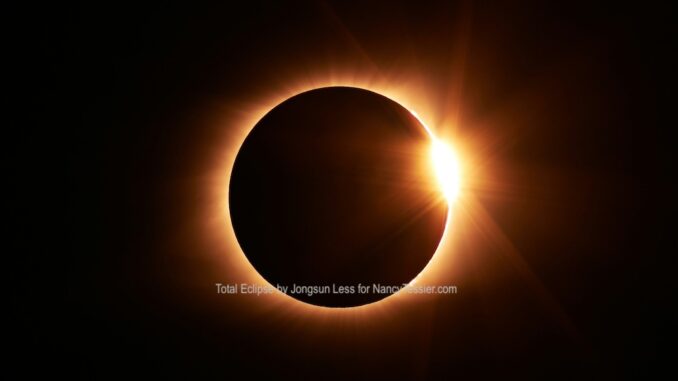
If you’re looking to debunk and fact check, you’ve come to the right place.
By Steve Arnold
Q: Can I use sunglasses to view the eclipse?
A: You should only view the eclipse through (actual) ISO approved eyewear or specially designed equipment. You wouldn’t stare at the sun through sunglasses for extended periods, so… yep it’s still the sun.
Q: Can I use binoculars or a telescope to get a better view of the eclipse?
A: No. Not unless they are specially designed for solar viewing. Any magnifying equipment will cause irreversible eye damage instantly.
Q: Can I take pictures with my phone camera?
A: It’s not recommended, but it depends. If you use ANY optical zoom, it will have the same impact on your phone’s imaging sensor as a magnifying glass has on an ant on a sunny day.
If you take pictures with your phone camera, you can do it with zoom by first taping some solar filter mylar (ie – destroy a pair of your highly-sought-after glasses) over the lens first. Try this ahead of time so you know what to expect. I have personally damaged a phone camera at high noon when using 2x optical zoom and doing some video of the sky, including the sun, and it’s not a pleasant after-effect to have all your pictures and videos have this ghost splotch on them from that point onward.
Please take the opportunity to learn from my stupidity. You CAN take zoomed in pictures without worry during totality, if you’re lucky enough (or well-planned enough) to be in that path.
Q: Why is everyone saying don’t look directly at the sun without eye protection, when so much of it will be covered? It seems like a lot of hype about nothing.
A: Even the last SLIVER of sun can damage your eyes if you take more than a glimpse. You will just have a crescent-shaped scar on your retina instead of a full disk, and the damage will occur faster because your pupils will be dilated more since the entire disk is not visible.
Overall, the scene will be darker than normal, BUT the visible fraction of the sun is just as bright as it normally is, and it’s eye-catching. This is the “hidden danger” of eclipses that many people overlook or don’t understand.
Q: Can I use a welding mask/glass to view the eclipse?
A: If it’s ISO 12312-2 certified, or certified as safe for solar viewing, then yes. Otherwise, it’s a crapshoot with the only set of eyes you have. Welding light and light from the sun have different spectral makeup.
Q: Can I remove my eclipse glasses during “totality”?
A: IF you’re in the path of totality, this is the ONLY time and place that you can safely view without eclipse glasses – those fleeting moments when the sun is totally covered, animals get confused, birds stop chirping and the stars pop out. At the first glimpse of a returning crescent of the sun, your eye protection needs to be back in place.
Q: Will I see solar flares during the eclipse?
A: If there happens to be a CME during the eclipse, and it’s on the limb of the sun, it’s possible to see a solar flare amidst the sun’s corona… but I’m just hoping for no cloud cover!
Q: What else can I see in the sky during a total solar eclipse?
A: It will be very similar to a night sky, with stars and planets visible. All 8 of the major planets will be aligned in view (Earth being in the line), but Uranus and Neptune will not be visible because they’re too dim.
There is also currently a comet that MIGHT be visible (12P/Pons-Brooks) just below and to the right of Jupiter (the bright yellow planet), but it will likely look like a smudge if it’s visible.
Be informed, protect your eyesight, and enjoy!
